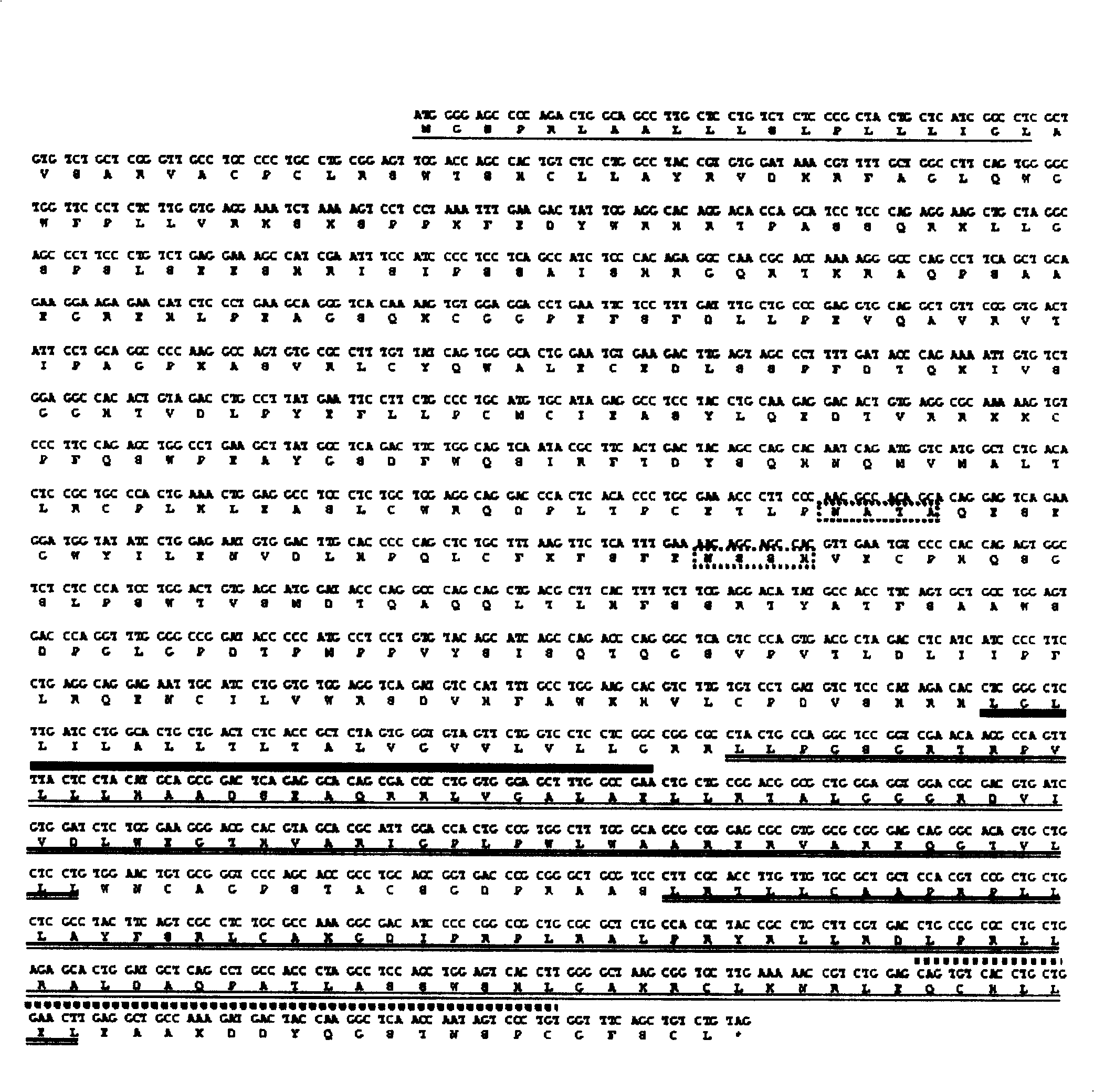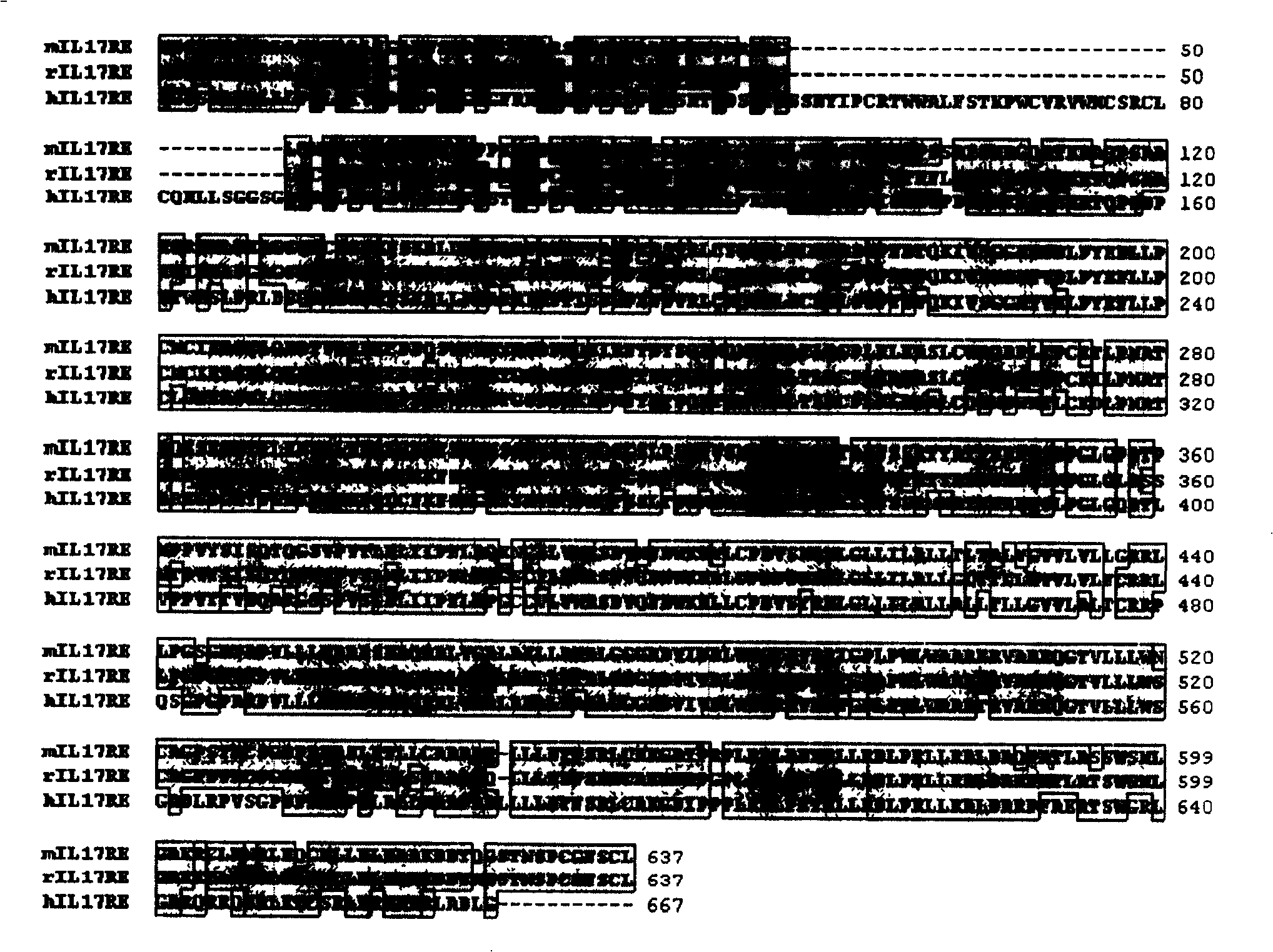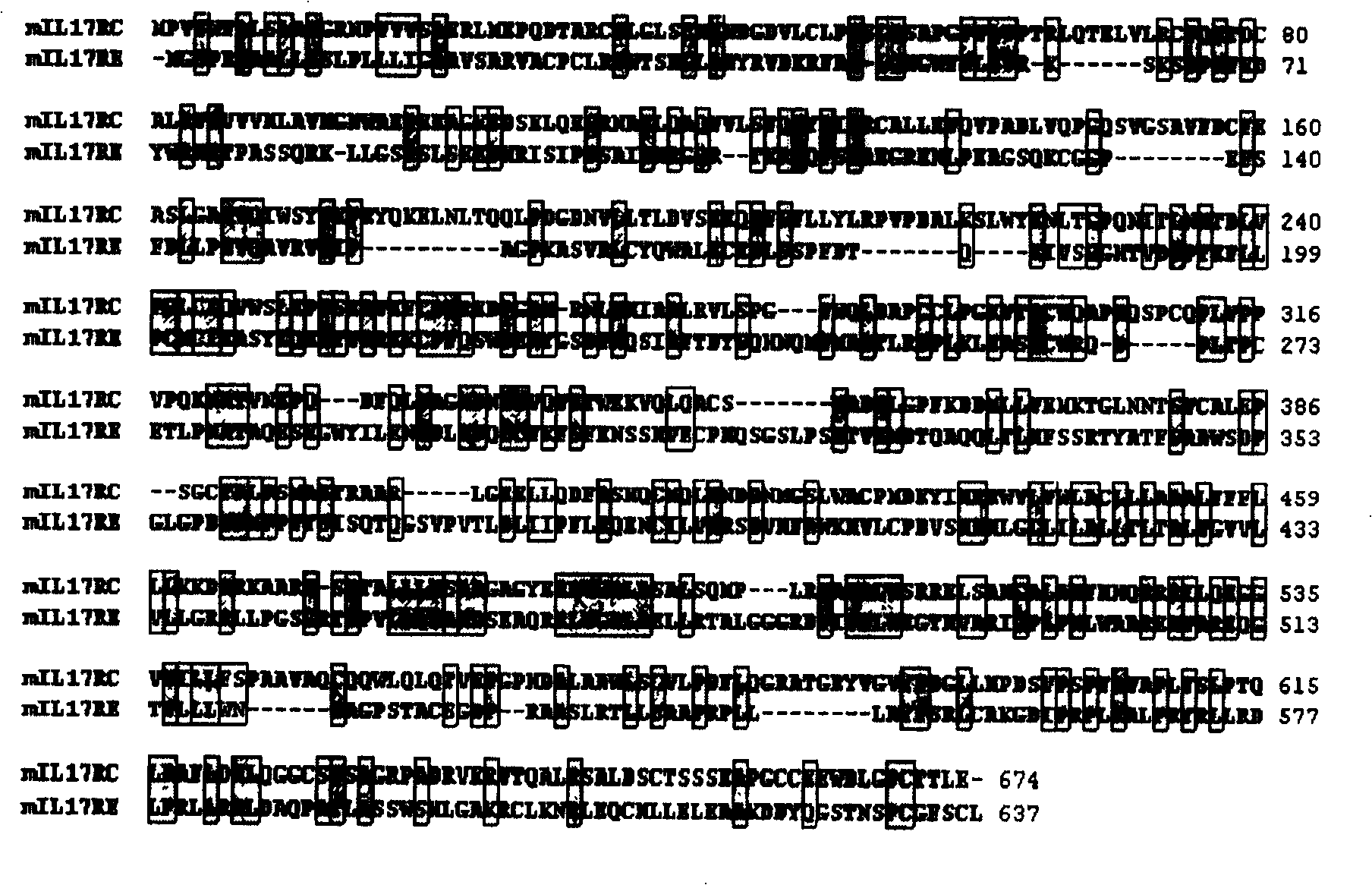Interleukin-17 acceptor, and its coding gene and application
A technology of interleukins and receptors, applied in the fields of proteins and their coding genes and applications, to achieve great practical significance and broad application prospects
- Summary
- Abstract
- Description
- Claims
- Application Information
AI Technical Summary
Problems solved by technology
Method used
Image
Examples
Embodiment 1
[0032] Embodiment 1, the cloning of mIL-17RE
[0033] Extract the total RNA of mouse colon tissue according to the conventional method and use it as a template under the guidance of primer P1 (upstream primer): 5′-cagacaggaaagacatggtctc-3′ and P2 (downstream primer): 5′-agacagctgaaaccacagggac-3′ The one-step RT-PCR kit from TaKaRa Company was used for RT-PCR amplification according to the instructions of the kit. After the reaction, the PCR amplification product was detected by 1% agarose gel electrophoresis, and the target fragment of 1914bp was recovered and purified. Since an A base was added to the 5' end of the product amplified by Taq polymerase, the target fragment was directly subcloned into the vector pGEM-T (purchased from Promega), and the recombinant product was transformed into Escherichia coli DH5α. State cells, positive clones were obtained by blue-white screening, the positive clones were selected to extract plasmids, and the plasmid vector containing the targ...
Embodiment 2
[0034] Example 2, bioinformatics analysis of mIL-17RE
[0035] Bioinformatics analysis is carried out to the amino acid residue sequence (SEQ ID №: 2 in the sequence listing) of the encoded protein mIL-17RE of mIL-17RE, and the analysis results are as follows: figure 2 As shown, the 1st to 25th amino acid residues from the amino terminal (N-terminal) of mIL-17RE1 is the signal peptide sequence, which consists of 25 amino acid residues; the 26th to 413th amino acid residues from the N-terminal are the extracellular region The sequence consists of 388 amino acid residues; the 414th to 439th leucine from the N-terminal is the transmembrane region sequence, which consists of 26 amino acid residues; the 440th to 637th leucine from the N-terminal is the intracellular region sequence, consisting of 198 amino acid residues. The results of ProSite analysis showed that there were two typical N-glycosylation sites in the extracellular region of mIL-17RE1, which were located at the 278t...
Embodiment 3
[0036] Embodiment 3, Northern hybridization detects the expression situation of mIL-17RE gene
[0037] The expression of mIL-17RE gene in normal mouse tissues and embryos was detected by Northern hybridization. The specific method is as follows: 8-week-old normal Kunming mice were killed by neck dislocation, and the main organs were collected, including heart, liver, spleen, kidney, lung, brain, stomach and testis. And after the mice were mated, embryos with gestational ages of 7.5, 8.5, 9.5, 10.5, 11.5, 12.5, 13.5 and 14.5 days were taken respectively. After the above organs and embryos were ground and homogenized, they were treated with TRIzol (purchased from Invitrogen) to extract total tissue RNA. About 10 μg of total RNA from each tissue was separated on 1.3% formaldehyde gel, and then transferred to a membrane of Hybond (purchased from Amersham Biosciences). Using the full-length cDNA of mIL-17RE as a template, the Prime-A-gene kit (purchased from Promega) was used to ...
PUM
 Login to View More
Login to View More Abstract
Description
Claims
Application Information
 Login to View More
Login to View More - R&D
- Intellectual Property
- Life Sciences
- Materials
- Tech Scout
- Unparalleled Data Quality
- Higher Quality Content
- 60% Fewer Hallucinations
Browse by: Latest US Patents, China's latest patents, Technical Efficacy Thesaurus, Application Domain, Technology Topic, Popular Technical Reports.
© 2025 PatSnap. All rights reserved.Legal|Privacy policy|Modern Slavery Act Transparency Statement|Sitemap|About US| Contact US: help@patsnap.com



